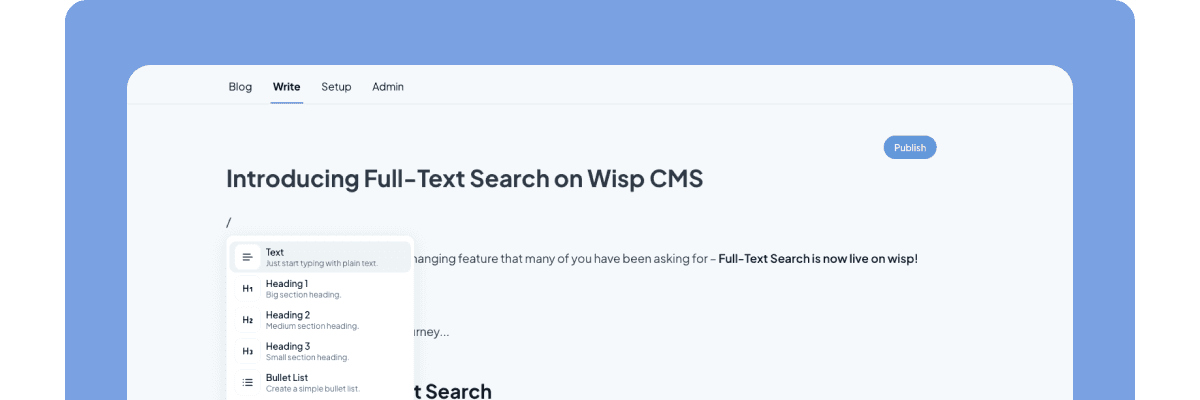 You've built a beautiful Next.js application with all the features your users need, but now your Lighthouse score is suffering and your Total Blocking Time (TBT) is through the roof. Even worse, your SEO rankings are starting to slip as Google's algorithms penalize your slow-loading pages. Frustrating, isn't it?
You've built a beautiful Next.js application with all the features your users need, but now your Lighthouse score is suffering and your Total Blocking Time (TBT) is through the roof. Even worse, your SEO rankings are starting to slip as Google's algorithms penalize your slow-loading pages. Frustrating, isn't it?
"By default, React hydrates the entire page at once, including components that are not immediately visible, which results in unnecessary JavaScript execution and slower interactivity," as one developer noted in a recent discussion. This default behavior is causing your Next.js application to underperform, directly impacting both user experience and search rankings.
The good news? You don't have to choose between performance and SEO. With Next.js, you can optimize for both—maintaining your search engine rankings while delivering lightning-fast experiences to your users.
The Deep Connection Between Performance and SEO
Google has made it crystal clear: site performance is a ranking factor. When your Next.js application loads slowly, you're not just frustrating users—you're actively damaging your search visibility.
Core Web Vitals metrics like Largest Contentful Paint (LCP), First Input Delay (FID), and Cumulative Layout Shift (CLS) are now directly tied to how Google perceives your site's quality. And with the introduction of the new Interaction to Next Paint (INP) metric, the pressure to optimize JavaScript execution and reduce TBT is higher than ever.
Many developers find themselves in a difficult position: "I put too much emphasis on website speed and always want to score 90+ if not 100. And sometimes, I have to compromise on a few features to achieve that goal," shared one developer in a Reddit thread. This struggle reflects a common misconception that you must sacrifice functionality for speed.
But here's the reality: with Next.js, you can have both. The framework was designed with performance and SEO in mind, offering server-side rendering capabilities that deliver HTML content search engines can easily crawl while providing numerous performance optimization techniques.
Understanding Next.js Rendering Strategies for SEO
Next.js offers multiple rendering strategies that directly impact both performance and SEO:
Server-Side Rendering (SSR)
With SSR, pages are generated on the server for each request, ensuring search engines always get fully rendered HTML:
// pages/blog/[id].js
export async function getServerSideProps(context) {
const { id } = context.params;
const post = await fetchBlogPost(id);
return {
props: { post }
};
}
This approach is perfect for content that changes frequently or needs to be personalized, while still maintaining SEO benefits.
Static Site Generation (SSG)
For content that doesn't change often, SSG pre-builds HTML at build time:
// pages/products/[id].js
export async function getStaticProps({ params }) {
const product = await fetchProduct(params.id);
return {
props: { product },
// Revalidate every hour
revalidate: 3600
};
}
export async function getStaticPaths() {
const products = await fetchTopProducts();
return {
paths: products.map((product) => ({
params: { id: product.id }
})),
fallback: 'blocking'
};
}
This delivers the fastest possible page loads while maintaining full SEO benefits—the perfect combination.
Incremental Static Regeneration (ISR)
ISR is a hybrid approach that gives you the SEO benefits of static generation while allowing content to update:
// pages/blog/[slug].js
export async function getStaticProps({ params }) {
const post = await fetchBlogPost(params.slug);
return {
props: { post },
revalidate: 60 // Regenerate page after 60 seconds
};
}
This strategy helps you maintain SEO rankings while ensuring content stays fresh.
Performance Optimization Techniques That Preserve SEO
Now that we understand the rendering options, let's explore specific techniques to optimize performance without sacrificing SEO:
1. Optimize React's Hydration Process
One of the biggest performance killers in Next.js applications is unnecessary hydration. As one developer noted: "React hydrates the entire page at once, including components that are not immediately visible, which results in unnecessary JavaScript execution and slower interactivity."
To address this, consider:
Implementing Progressive HydrationUse the App directory's client components feature to selectively hydrate only the interactive parts of your page:
'use client'
import { useState } from 'react'
export default function Counter() {
const [count, setCount] = useState(0)
return (
<div>
<p>Count: {count}</p>
<button onClick={() => setCount(count + 1)}>Increment</button>
</div>
)
}
Libraries like next-lazy-hydration-on-scroll can significantly reduce TBT by only hydrating components when they enter the viewport:
import { LazyHydrate } from 'next-lazy-hydration-on-scroll';
function MyPage() {
return (
<>
<Header /> {/* Hydrated immediately */}
<LazyHydrate whenVisible>
<ComplexInteractiveComponent /> {/* Hydrated when visible */}
</LazyHydrate>
</>
);
}
This approach keeps the initial page load fast while maintaining all functionality, addressing the concern that "If it will take time to load, you will lose the user."
2. Implement Lazy Loading for Below-the-Fold Content
Next.js provides built-in support for lazy loading components and images, which is crucial for performance without affecting SEO:
Component Lazy Loading with next/dynamicimport dynamic from 'next/dynamic';
// Lazy load a complex component
const HeavyComponent = dynamic(() => import('../components/HeavyComponent'), {
loading: () => <p>Loading...</p>,
ssr: false // Skip SSR for client-only components
});
This approach dramatically reduces your initial JavaScript bundle size while ensuring search engines still see your content.
Image OptimizationThe Next.js Image component automatically optimizes images and implements lazy loading:
import Image from 'next/image';
function MyComponent() {
return (
<Image
src="/large-hero.jpg"
alt="Hero image with descriptive text for SEO"
width={1200}
height={600}
priority={false} // Lazy load this image
/>
);
}
The priority attribute lets you mark above-the-fold images as critical, ensuring they load immediately while deferring others—a perfect balance of performance and SEO.
3. Leverage Streaming with App Router
Next.js 13's App Router introduced streaming, which allows you to progressively render UI from the server:
// app/dashboard/page.js
import { Suspense } from 'react';
import Loading from './loading';
import DashboardMetrics from './DashboardMetrics';
export default function Dashboard() {
return (
<main>
<h1>Dashboard</h1>
{/* Critical UI renders immediately */}
<section>
<h2>Summary</h2>
<p>Your account overview...</p>
</section>
{/* Data-heavy component streams in */}
<Suspense fallback={<Loading />}>
<DashboardMetrics />
</Suspense>
</main>
);
}
This pattern improves user experience by delivering content progressively while ensuring search engines still access all content during crawling.
4. Implement Proper Semantic HTML Structure
"I see this as the most common issue while auditing websites," notes one SEO expert regarding improper HTML structure. Using semantic HTML not only improves accessibility and SEO but can also positively impact performance by reducing unnecessary DOM complexity:
// Bad for SEO and performance
<div className="heading">Main Title</div>
<div className="text">This is content...</div>
// Good for both SEO and performance
<h1>Main Title</h1>
<p>This is content...</p>
Avoid the temptation to use dangerouslySetInnerHTML without careful consideration, as it can introduce both security risks and performance issues if not handled properly.
5. Optimize Critical CSS and JavaScript
Next.js automatically handles code splitting, but you can further optimize by:
Keeping client components small and focused
Using the IntersectionObserver API for custom visibility-based loading
Implementing proper caching strategies with Next.js cache control headers
// pages/api/data.js
export default function handler(req, res) {
res.setHeader('Cache-Control', 's-maxage=10, stale-while-revalidate=59');
res.status(200).json({ data: 'Cached for performance' });
}
Measuring the Impact on SEO and Performance
How do you know if your optimizations are working? Use these tools and metrics:
Lighthouse Score: Run regular audits to track overall performance, accessibility, and SEO scores
Core Web Vitals: Monitor LCP, CLS, FID, and the new INP metric
Search Console: Track how Google perceives your site's performance
Next.js Analytics: Use Vercel Analytics to continuously monitor real user metrics

Balancing Act: Real-world Implementation
Implementing these optimizations requires a thoughtful approach:
Start with server components: Use React Server Components for non-interactive parts of your UI
Add client components strategically: Only make components interactive when necessary
Implement progressive enhancement: Ensure your site works without JavaScript, then enhance
Prioritize above-the-fold content: Optimize what users see first for both SEO and performance
A developer shared their approach: "I still separate the backend. When I am developing, I don't want to make a change server side and have to wait for the frontend to rebuild." This separation of concerns can help maintain development velocity while still leveraging Next.js performance features.
Conclusion
The days of choosing between performance and SEO are over. With Next.js, you can implement strategies that enhance both simultaneously. By understanding the deep connection between them and leveraging Next.js's powerful features—from server components to lazy loading, from streaming to efficient hydration—you can create applications that rank well and provide exceptional user experiences.
Remember that "development of website can affect SEO" in profound ways. The architectural decisions you make today will impact both your performance metrics and search rankings tomorrow.
As you implement these optimizations, keep the user experience at the center of your decisions. After all, the ultimate goal is not just a perfect Lighthouse score or top search ranking, but creating applications that users love and can access easily.
By implementing these strategies, you'll be well on your way to mastering the delicate balance between performance optimization and SEO in your Next.js applications.



